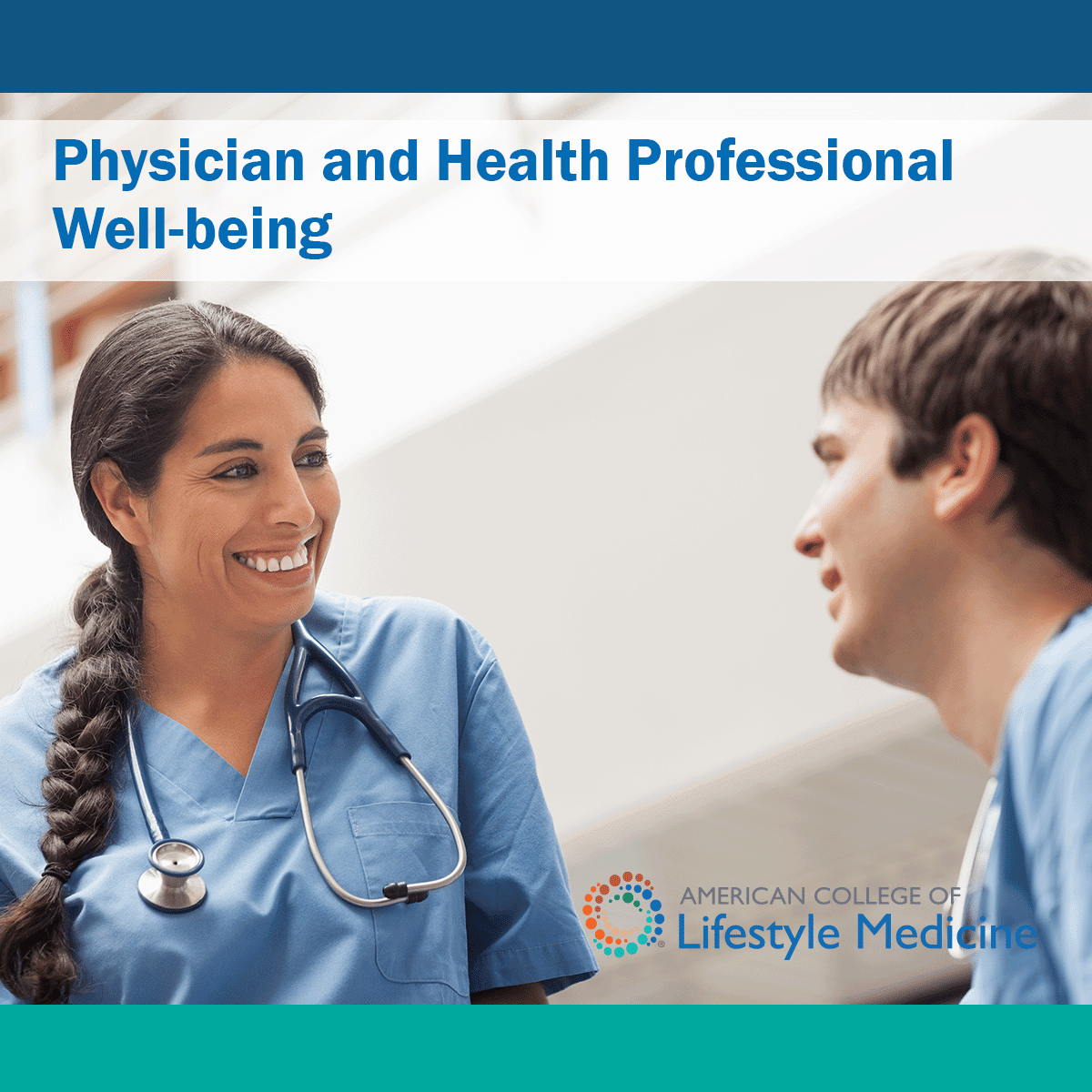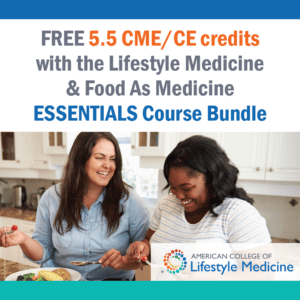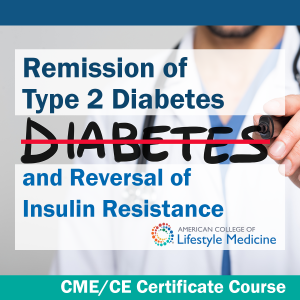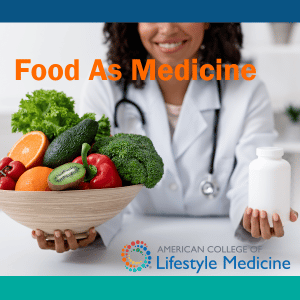The Role of Lifestyle Medicine in Helping to Build Workforce Retention and Resilience
By Suzanne K. Speer, Vice President of Workforce Development, Association of Clinicians for the Underserved

The COVID-19 pandemic illuminated what so many in healthcare already knew: to provide effective care to patients, organizations must also prioritize employee well-being. Employee well-being is a significant predictor of workforce outcomes,[1] and clinician burnout has serious impacts on quality of care and patient satisfaction.[2] Simply put, we cannot care for others until we care for ourselves, and clinicians cannot stand alone: organizations must support their workforce and foster resilience through a host of approaches, including lifestyle medicine.
The Reality of Burnout
Burnout is a fact of life in the healthcare workforce, and mitigating the effects is a crucial factor in staff retention. One in three physicians experience burnout at any given time,[3] and the phenomenon affects all healthcare professionals of all disciplines.[4] Its effects are diverse. Energy levels can drop as clinicians suffer from exhaustion. Compassion fatigue—the stress and vicarious trauma of caring for others—can set in, resulting in depersonalization or disconnection in care. And lastly, clinicians’ belief in their mission—and their effectiveness itself—can falter.
If the effects of burnout are many, so are the causes. Organizationally, administrative inefficiencies, unclear expectations, and competing demands can play significant roles in wearing down clinicians’ reserves. On a personal basis, work-life balance, family dynamics, and caretaking obligations as well as time management can also all play a role in burnout. Worse patient safety, decreased efficiency, and turnover can often be the result.[5]
Building Resilience through Organizational Commitments to Wellness
Despite these challenges, there are very real approaches to foster employee wellness and reduce burnout. At the Association of Clinicians for the Underserved (ACU), we often educate institutions in well-being strategies in the understanding that building a stronger workforce begins not with recruitment, but with retention. In our National Center for Workforce Development & Training’s numerous initiatives, we center efforts to advance both organizational and individual resilience and the retention of our workforce.
What we teach is clear: organizations must support clinician well-being through holistic approaches. Fostering an organizational culture that is trauma-informed is critical, as is ensuring employees’ psychological safety. So, too, is a commitment to justice, equity, diversity, and inclusion. Diverse approaches are necessary to meet the needs of a diverse workforce—from creating flexible workspaces that encourage self-care and work-life balance to fostering lifestyle wellness.
A Holistic Approach and the Role of Lifestyle Medicine
In its emphasis on whole-person health, lifestyle medicine is a natural component of a holistic approach to employee wellness. Workforce wellness programs have notable effects on fostering positive health behaviors,[6] and lifestyle medicine can play a key role in fostering wellness and productivity in employees.[7] Similarly, adopting a lifestyle medicine approach in patient care can also benefit professional satisfaction and is associated with lessened burnout.[8]
Ultimately, the burden and the benefits of employee retention lie with the employer, and an ongoing and inclusive commitment to employee wellness is necessary. Lifestyle medicine is a crucial element of these approaches, and ACU is proud to partner with the American College of Lifestyle Medicine to spotlight its importance. For years, we’ve known the impact that fostering holistic approaches such as lifestyle medicine can make in achieving health equity. There’s no better time than now to recognize the impact it can have on the wellness of our employees as well.
RESEARCH STUDY
The integration of lifestyle medicine emerges as a promising approach, offering healthcare practitioners a means to prevent and manage burnout, enhance their professional satisfaction, and establish deeper connections with their patients.
Read the full study: Lifestyle Medicine Practitioners Implementing a Greater Proportion of Lifestyle Medicine Experience Less Burnout

If you are a clinician who:
- Knows what it means to be healthy, but finds it challenging to make plans for your own self-care;
- Struggles with feelings of exhaustion, being mentally distant from your practice/patients, or is experiencing a reduction in daily productivity;
- Wishes you could do more as a role model and support a work culture that honors self care;
- Is interested in practical ways to improve your own well-being;
This course is for you.
Join ACLM at the Association of Clinicians for the Underserved’s (ACU) 2024 Annual Conference
ACLM will be holding a joint pre-conference session on Sunday, August 4th, entitled, “Lifestyle Medicine: Advancing the Quintuple Aim through Lifestyle Medicine within Health Center Networks”
In this session, you will hear about lifestyle medicine strategies emerging within health centers, learn tips on getting buy-in and support from health center leadership when trying to implement and scale lifestyle medicine clinic-wide, and be inspired by health center partnerships with community-based organizations helping to mitigate social needs that create barriers to lifestyle medicine interventions.
Cost for the pre-conference session is $199. Consider attending ACU’s 2024 Conference in Washington D.C. on the following days – Aug 4-7.
CITATIONS:
[1] Sears LE, Shi Y, Coberley CR, & Pope JE. 2013. “Overall well-being as a predictor of health care, productivity, and retention outcomes in a large employer.” Population Health Management 16(6): 397-405.
[2] June J, Ojemeni, M, et al. 2021. “Relationship between nurse burnout, patient and organizational outcomes: Systematic review.” International Journal of Nursing Studies 119: 103933.
[3] De Hert, S. 2020. “Burnout in Healthcare Workers: Prevalence, Impact and Preventative Strategies.” Local Reg Anesth 13: 171-183.
[4] Kirzinger, A, Kearney, A, et al. 2021. “KFF/The Washington Post Frontline Health Care Workers Survey.” KFF. Retrieved from https://www.kff.org/report-section/kff-the-washington-post-frontline-health-care-workers-survey-toll-of-the-pandemic/.
[5] Garcia CL, Abreu LC, et al. 2019. “Influence of Burnout on Patient Safety: Systematic Review and Meta-Analysis. Medicina (Kaunas) 55(9):553.
[6] Sears, LE, Shi Y, Coberley CR, & Pope JE. 2013.
[7] Burton, WN, Edington, DW, & Schultz AB. 2020. “Lifestyle Medicine and Worker Productivity.” Am J Lifestyle Med. 15(2):136-139.
[8] Pollard KJ, Gittelsohn J, Patel P, Lianov L, Freeman K, Staffier KL, Pauly KR, Karlsen MC. 2023. “Lifestyle Medicine Practitioners Implementing a Greater Proportion of Lifestyle Medicine Experience Less Burnout.” Am J Health Promot 37(8): 1121-1132.








